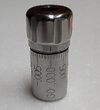westernrover
Member
- Joined
- May 4, 2018
- Messages
- 1,613
I need more inserts for gauging shoulder bump on rifle cases, and the Sinclair have been out of stock for over a year now. I guess I need to switch brands.
SAC doesn't seem to make one for one of my cartridges that has a 25 degree shoulder and 6.5mm caliber
RCBS makes a nifty-looking micrometer deal, but it's cartridge-specific. I could get one for my 223 Rem., but it's a bit pricey and they don't make any for any of my other cases.
Should I just get the Hornady set? Is there a better option?
SAC doesn't seem to make one for one of my cartridges that has a 25 degree shoulder and 6.5mm caliber
RCBS makes a nifty-looking micrometer deal, but it's cartridge-specific. I could get one for my 223 Rem., but it's a bit pricey and they don't make any for any of my other cases.
Should I just get the Hornady set? Is there a better option?


